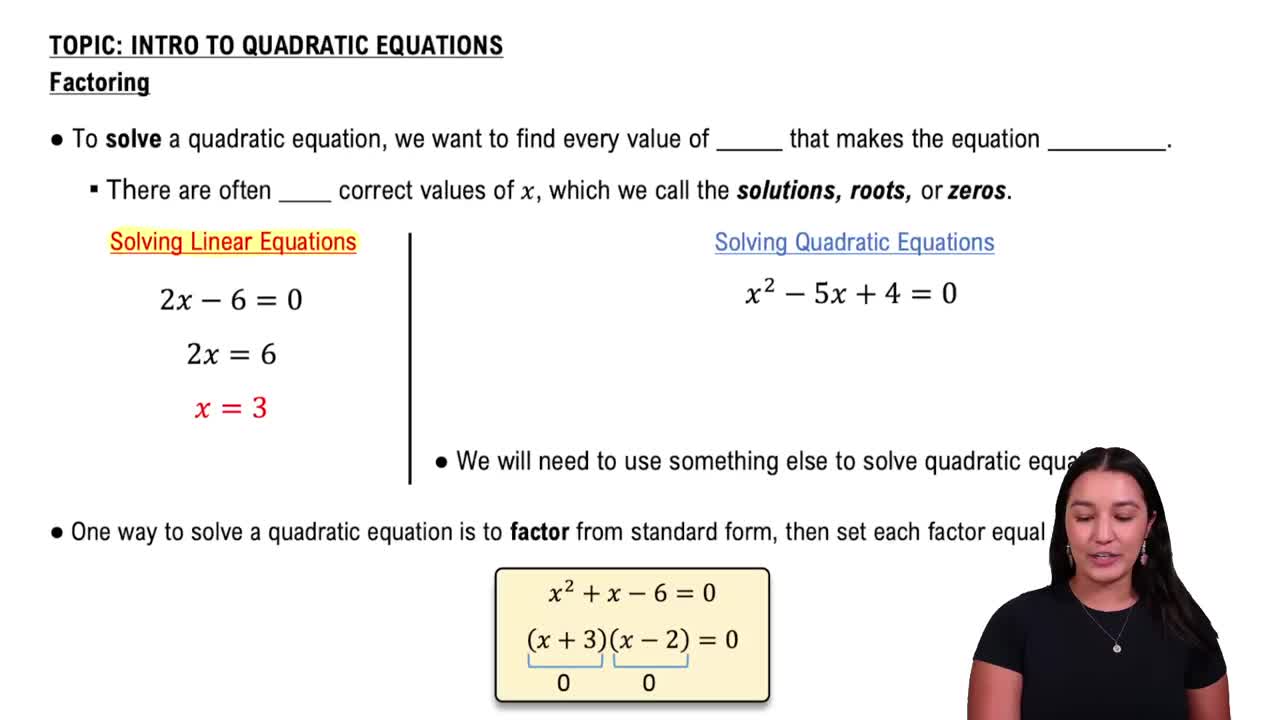Here are the essential concepts you must grasp in order to answer the question correctly.
Factoring Quadratic Equations
Factoring is the process of breaking down a quadratic equation into simpler expressions that can be multiplied to yield the original equation. In the case of a quadratic in the form ax^2 + bx + c = 0, we look for two numbers that multiply to ac and add to b. This technique simplifies solving the equation by setting each factor to zero.
Recommended video:
Solving Quadratic Equations by Factoring
Setting the Equation to Zero
To solve a quadratic equation by factoring, it is essential to first rearrange the equation so that one side equals zero. This is done by moving all terms to one side, resulting in a standard form of ax^2 + bx + c = 0. This step is crucial because it allows us to apply the Zero Product Property, which states that if the product of two factors equals zero, at least one of the factors must be zero.
Recommended video:
Finding Zeros & Their Multiplicity
Zero Product Property
The Zero Product Property is a fundamental principle in algebra that states if the product of two or more factors equals zero, then at least one of the factors must be zero. This property is used after factoring a quadratic equation, allowing us to set each factor equal to zero and solve for the variable. It is a key step in finding the solutions to the original equation.
Recommended video:
Product, Quotient, and Power Rules of Logs
 Verified step by step guidance
Verified step by step guidance Verified video answer for a similar problem:
Verified video answer for a similar problem:



 5:35m
5:35m